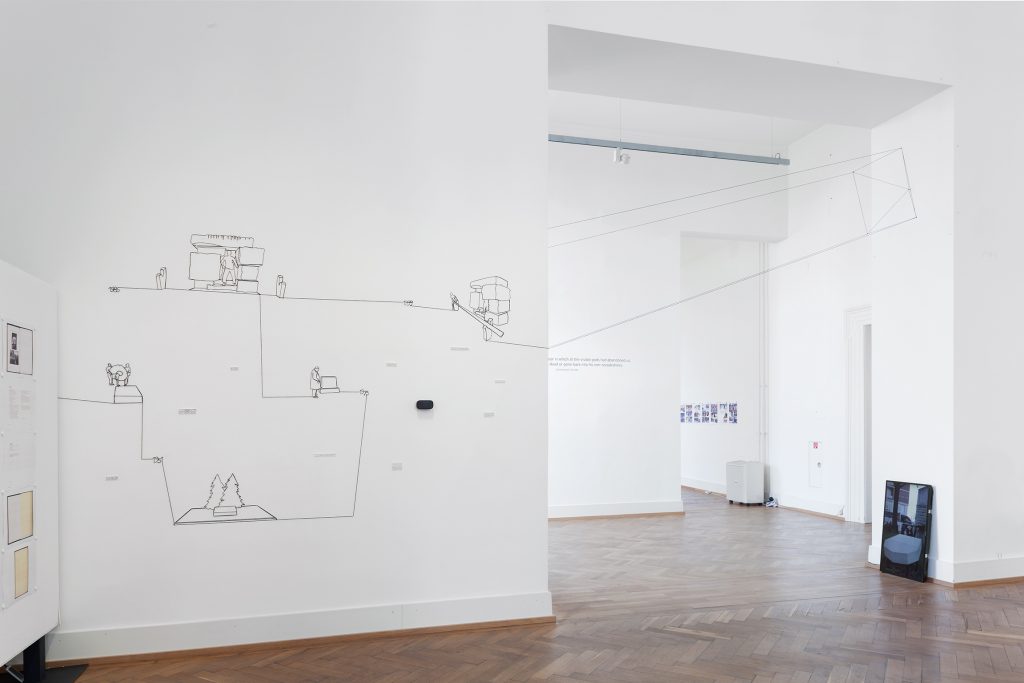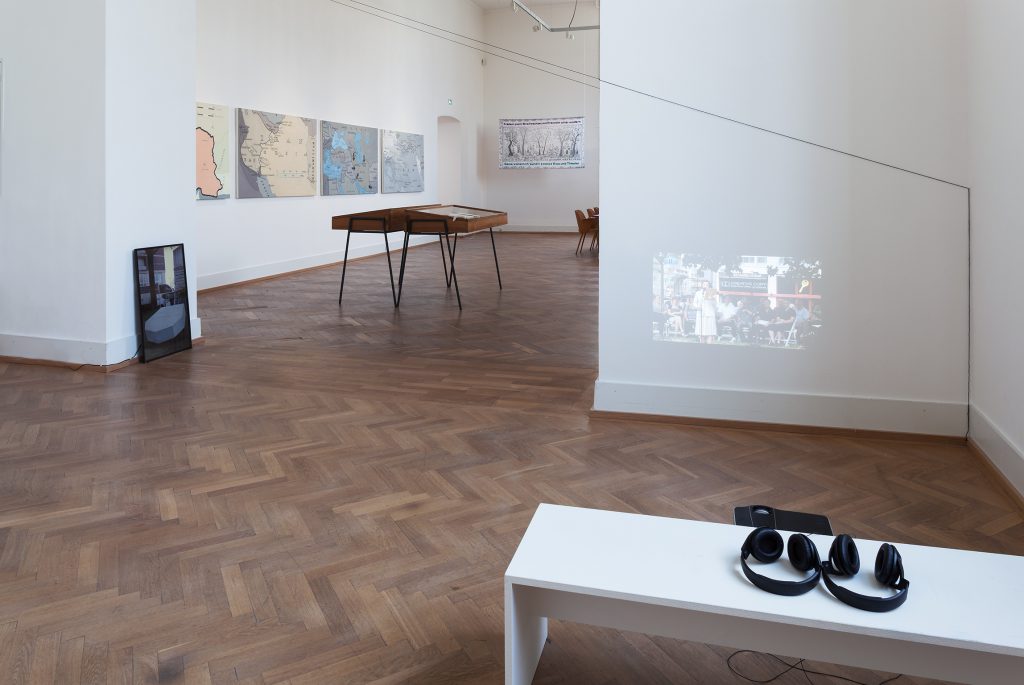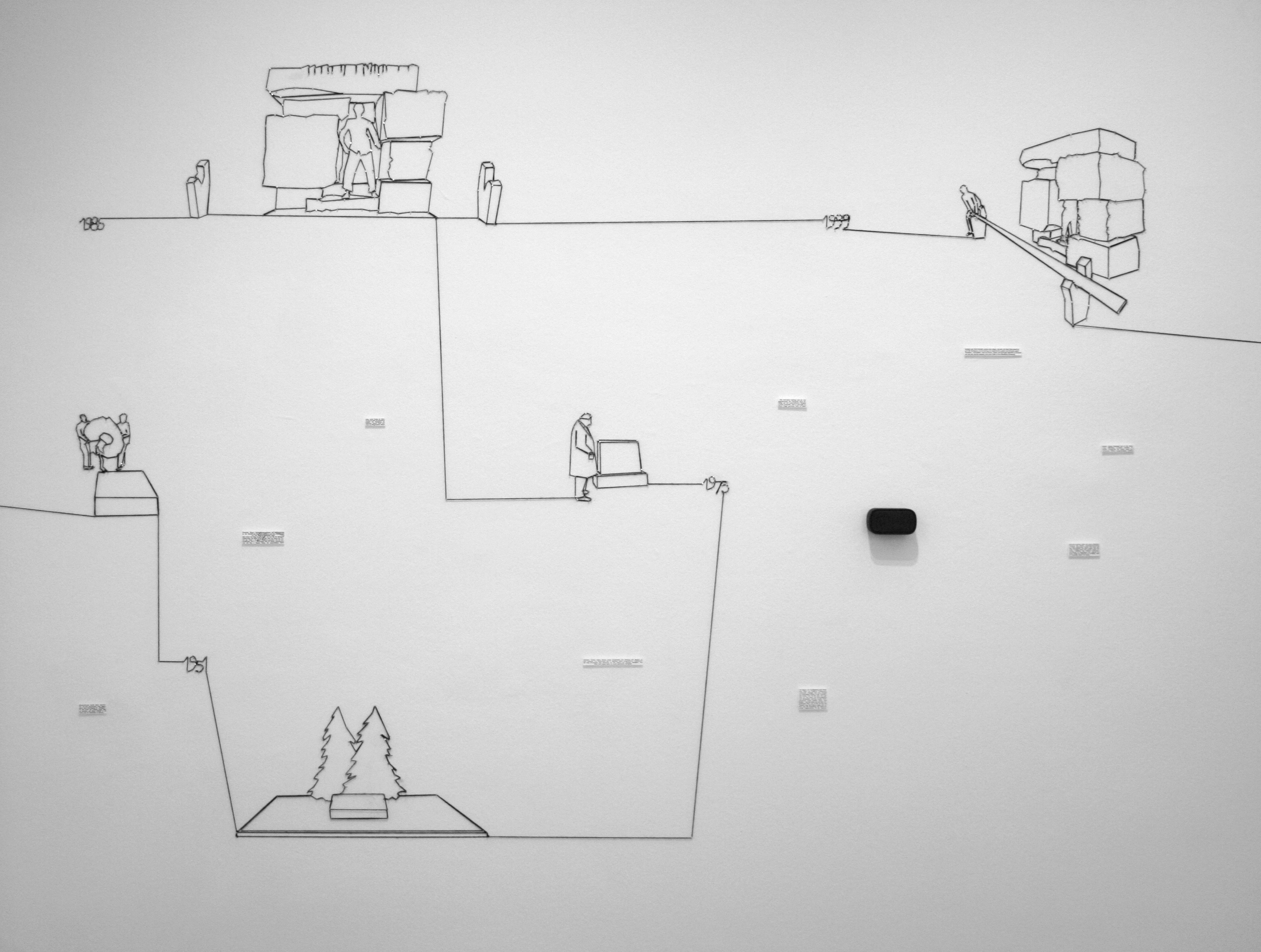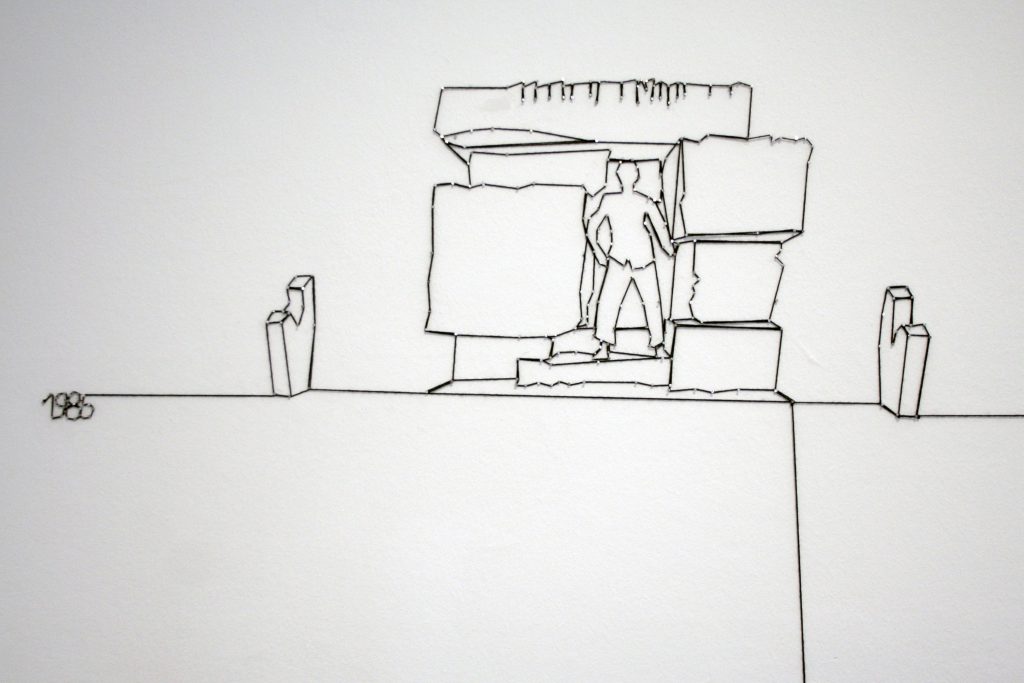The work is based on a performance and intervention project titled "What they neglected, we did." (2015). It considers the spatial, aesthetic and political dynamics between self-organized interventions and the official governmental and municipal contribution to commemoration at Vienna’s Morzinplatz, a city-square where the Gestapo headquarters were located during the Nazi era.
A Stone Stands Here. Formations of Remembrance, 1949–
Spatial installation by Zsuzsi Flohr and Eduard Freudmann, music by Benjy Fox-Rosen (2016)
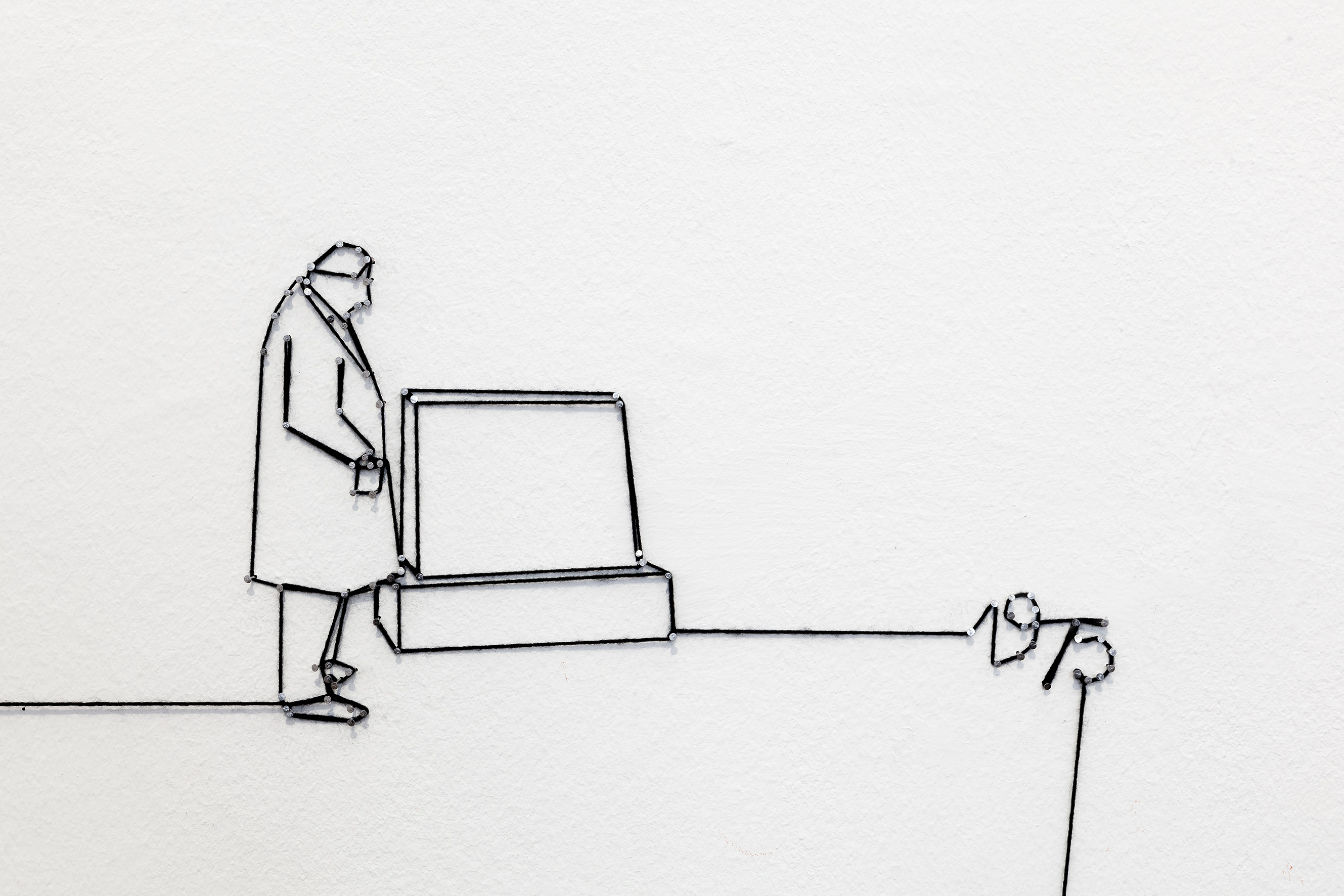
A Stone Stands Here. Formations of Remembrance, 1949–
Spatial installation by Zsuzsi Flohr and Eduard Freudmann, music by Benjy Fox-Rosen (2016)
The work is based on a performance and intervention project titled "What they neglected, we did." (2015). It considers the spatial, aesthetic and political dynamics between self-organized interventions and the official governmental and municipal contribution to commemoration at Vienna’s Morzinplatz, a city-square where the Gestapo headquarters were located during the Nazi era.

A Stone Stands Here. Formations of Remembrance, 1949–
In 1938 the local Hotel Metropole at Vienna’s Morzinplatz was confiscated by the Gestapo, which turned it into their headquarters, making it the largest Gestapo office outside of Berlin. This became a prominent site for opponents and victims of the regime who were interrogated and tortured there, and sent to various concentration camps. The site was eventually bombed by the allies and torn down, eliminating any visual memory of its role and function.
In 1938 the local Hotel Metropole at Vienna’s Morzinplatz was confiscated by the Gestapo, which turned it into their headquarters, making it the largest Gestapo office outside of Berlin. This became a prominent site for opponents and victims of the regime who were interrogated and tortured there, and sent to various concentration camps. The site was eventually bombed by the allies and torn down, eliminating any visual memory of its role and function.
After the Nazi regime, survivors demanded a monument to be built in the shape of an obelisk. The city rejected this request and as a protest, in 1951, these survivors illegally set up a monument on site. Over 30 years later, in 1985, an official monument was built by the city, substituting the illegal monument, yet including its original inscription.
A Stone Stands Here was presented at Uncanny Materials, Founding Moments of Art Education, curated by Elke Krasny and Barbara Mahlknecht, xhibit Academy of Fine Arts Vienna, 2016. It emphasizes the hard-headedness of governmental structures, and contemplates on the public’s ability to bring forth truths and to create tangible change. The work included a wall "drawing" made of nails and string that, in a continuous line, documents the timeline of the Morzinplatz commemoration monument events from 1951 to the present. The line builds up to a three-dimensional obelisk hovering over passersby at the gallery’s passageway. The installation also consisted of a video projection of a still image of the current monument alongside a documentation of the artists’ on-site public intervention from 2015.
